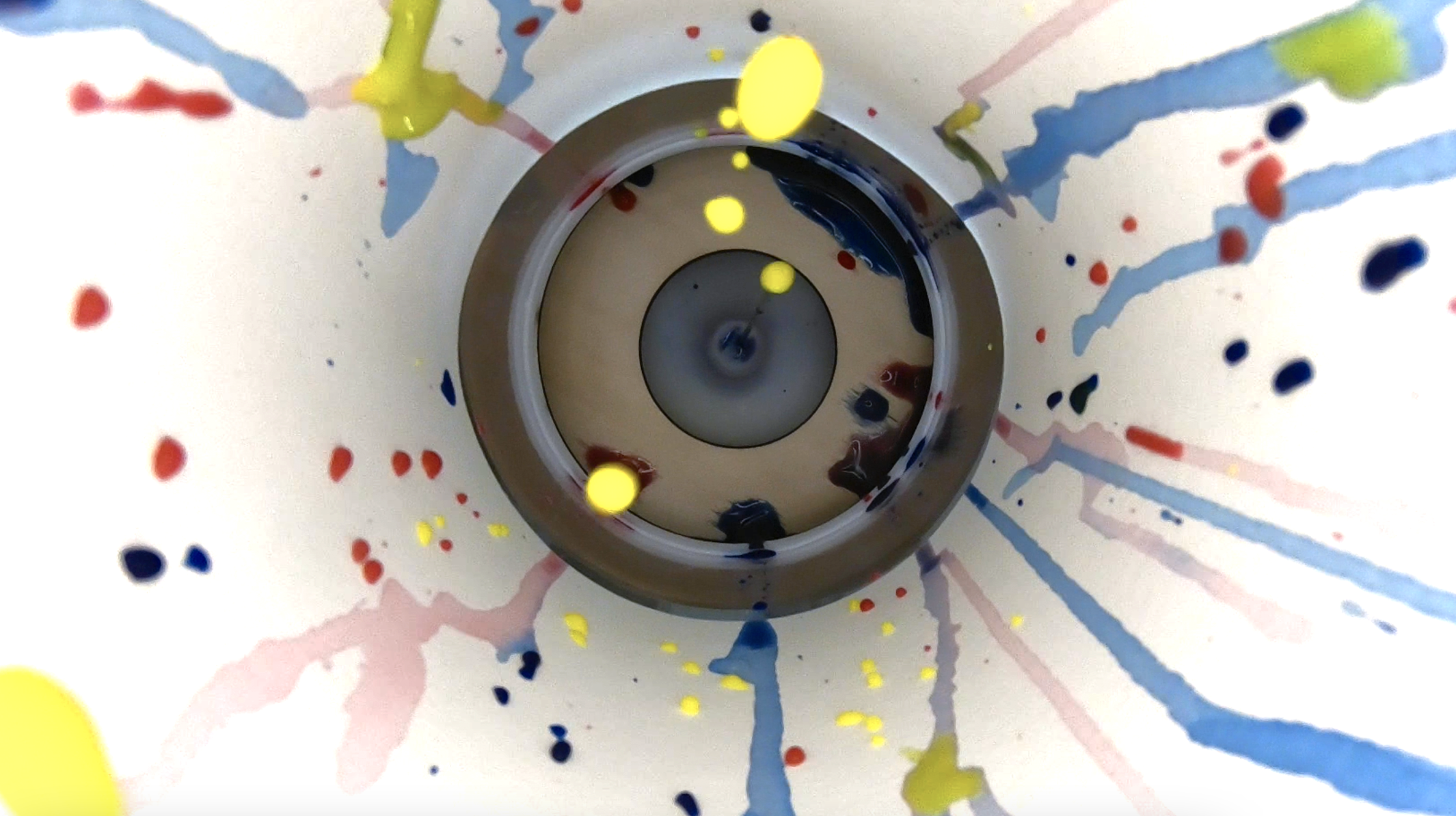Fluid Expressions
Contributors | Sana Sharma
Credit: Sana Sharma
When imagining human life in space, how will we express our humanity and creativity in an alien environment? Can the art we make both reflect the unique qualities of space and keep us connected to Earth?
Fluid Expressions incorporates science, art, and design into an exploration of art-making and place-making in outer space. The work centers around the design and craft of an object called a memory capsule, designed to function as both a traveler’s painting kit for space and an embodied, material reminder of home. Inspired by artist and astronaut Nicole Stott, who created the first watercolor painting in microgravity, the project focuses on the design, prototyping, and zero-g testing of a speculative artifact called a memory capsule — a container designed for zero-g watercolor painting that reminds the user of Earth and home through its hand-crafted design and tactile materials. The result is a totally unique art making tool that feels at home on Earth or on orbit, but is designed explicitly to use microgravity as an element of artistic creation.
Credit: Sana Sharma
Fluid Expressions aims to explore the relationship between place and the art we create, how we see our homes from afar, and what inspires us about journeying into new regions that challenge and evolve our perceptions. The speculative nature of this work is grounded in real obstacles and opportunities afforded by travel off-planet, offering a hypothetical near-term future in which artists are among those who travel to and record our experiences of outer space.
A solo exhibition showcasing Fluid Expressions through the lens of speculative fiction is hosted by the Harvard GSD Kirkland Gallery. Three memory capsules flew aboard a Zero-G parabolic flight in May 2021, in order to test its performance and capabilities during periods of weightlessness.
Credit: Steve Boxall / ZERO-G
Credit: Sana Sharma
Credit: Sana Sharma
Flight Mission Summary
News & Publications
Fluid Expressions: Harvard GSD Kirkland Spring 2021 Exhibition (Kirkland Gallery)
Life in space: Preparing for an increasingly tangible reality (MIT News)





